FIRST THE...SICILIANS! THE ORIGIN OF SICILIANITY

Photo Source: Giuseppe Perdichizzi
In mathematics we define axiom a principle that is believed true for evidence. In other words, this
truth does not need to be demonstrated. In religious terms one should believe it for
faith. For example, on the evidence that for two points only one line passes, Euclidean geometry has been constructed, which until modern times was considered the only possible geometry.
Asserting
Before the Sicilians! assumes that there is a definite and identifiable
Sicilianity, which
can not be reduced to only being born or living in Sicily, otherwise my brother , which has recently moved to Milan, would no longer be
Sicilian or risk losing, after a given period (which no scientific study has yet determined ...), this status. It is therefore necessary to understand which is the
axiom which gives rise to the construction of
sicilianità.
Genetics can be widely refuted to help us . < br>
It is therefore necessary to follow another path for the determination of the
sicilianità: we try through a historical approach, trying to identify the purest and most original Sicilian stock.
 Who were then the authentic Sicilians?
Who were then the authentic Sicilians?
Were the "pre-Hellenic" and "pre-fenic" natives? Namely the
sicule,
sicane and
elime populations that inhabited the island until the 5th century BC, coexisting with the most advanced Greek colonies and Phoenicians to be completely assimilated?
Or perhaps the incipit of
sicilianità was given by the secular "foreign" dominations / colonizations. However, at least initially, the
Greeks (which invaded / colonized the eastern part of the island, founding for example Syracuse) and the
Phoenicians (ie the
Canaanite civilization settled along the Mediterranean coast between the current states of Syria and Israel, which colonized / invaded the western side of Sicily, founding for example Palermo) were not considered more
Sicilian of the native populations. At some point in history, however, should have become (otherwise, disappeared as administrative entities Sicilian populations, sicane and elime, the Sicilian would have died out with them and today we would be here to talk about something else ...), as well as the later Romans, Byzantines, Islamic, Norman, Aragonese, Hapsburg and Bourbons, who for centuries have inhabited the Sicilian island.
Does a colonizing population acquire the
sicilianità after at least a century of residence on the island? If this were the case, erupts, Ostrogoths, Swabians, Angevins, Piedmontese (who for a short time put their hands on Sicily already a century before the final "annexation" through the
Shipping of a thousand) and Austrians (or better, again the Habsburgs, even if of another family branch), with their relatively brief but fundamental passage would have remained outside the acquisition of
sicilianità. So Federico II, although he considered himself Sicilian, really would not have been.
Allow me a brief disgrace: to reread all the names of the "colonizing" cultures of Sicily
you understand well why some Sicilians look more like those Germans disembarked from cruise ships to Messina (I refer just to those in t-shirt and shorts even in December ...), rather than the classic low topos, dark-skinned, with the
scuzzetta and dark mustache.

Returning to our historical analysis, among the most famous "Sicilians" of all time there is the aforementioned stupor mundi Federico II! Historically considered one of the most innovative European sovereigns in history, grew up and educated in Sicily by Christian and Islamic preceptors, unpopular to the popes of the time for his secular vision of politics and for the opening towards the Islamic Sicilians (which also earned him the nickname of Christian sultan and some excommunications), made Palermo the most flourishing and stimulating European court of the 13th century. Could it be considered Sicilian? Frederick II, later also emperor of the Holy Roman Empire, belonged to the noble sveva (ie German ...) family of the Hohenstaufen. On the other hand, the mother was descended from the Normans (population of Danish and Norwegian origin ...) from Altavilla (Hauteville, France ...) Yet it was considered more Sicilian than anything else, enough to decide to keep the two separate crowns.
Unless even to disagree with an emperor, we can say that the sicilianità is more about sharing certain values (political, religious, culinary ...) than a genetic or historical belonging. But what values? In Sicily there was everything and the opposite of everything: from polytheism, to Islam, to Greek and Roman Christianity; from democracy, to tyranny, to feudalism, from cuccìa to cassata, all'arancino / a ...
The sicilianità is the result of a process of commingling between the cultures of almost the entire Mediterranean and most of Europe, which began millennia ago. The result is a sort of syncretism evident not only in the language (which houses terms and expressions deriving from all colonizing cultures) but also in the architecture of monuments: in Sicily we find ourselves for example with Roman villas or Byzantine churches built on the foundations of structures Greek; and Greek mosques or temples set in cathedrals.
Sicilianity can mean everything and nothing. Since the history of Sicily is the emblem of the history of humanity, always characterized by movements and migrations for the most disparate reasons. The richness of Sicilian culture (or rather, of the culture that has been generated in Sicily) is the result of a sort of melting pot, certainly not of an identity isolation. Saying sicilianity is saying humanity.

The problem (according to my modest opinion) arises when implicitly assumes the sicilianità (or the italianità ...) as ideology. In other words, when we consider the esserci of the siciliano as evident, for which therefore we do not need any demonstration: the Sicilian, simply, there is.
From this point of view, affirming before the Sicilians assumes that there are non-Sicilian : if the assumed is considered true from the community (in this case) of the Sicilians, the non-sicilianità is a logical consequence that does not need to argue. Quoting Hannah Arendt (forgive me if I choose to omit the text from which I quote, but the eloquence of the title would offend your intelligence) ideological thinking becomes independent of every experience: in other words, it does not matter to demonstrate the historical, cultural and genetic inconsistency of the sicilianità concept as defined and clearly determined. Since if the aim is to politically justify the right to the selfish exclusion of the non-Sicilianity, any dissent will be marked by the community as anti-social, anti-Sicilian, not true as opposed to the "truth", in contrast with the evidence of sicilianità.
Text Source: Antonino Rampulla
ARCHIVE NEWS
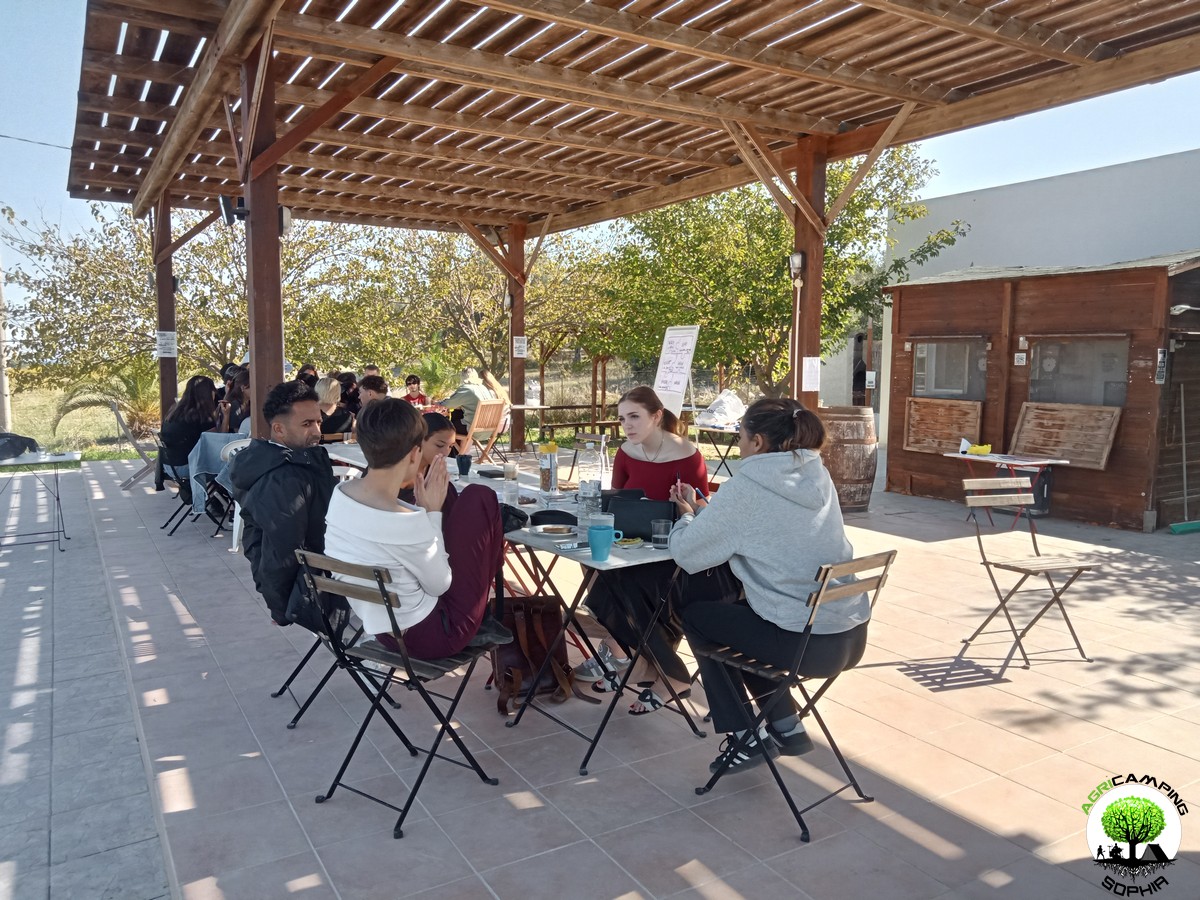 DO YOU WANT TO ORGANIZE AN ERASMUS AT AGRICAMPING SOPHIA?
DO YOU WANT TO ORGANIZE AN ERASMUS AT AGRICAMPING SOPHIA?
WHAT IS AGRICAMPING SOPHIA?
It is a campsite with tent pitches, glamping tents, mobile homes and bungalows
WHERE IS IT?
In Italy, in Sicily, near Syracuse, in Pachino: 36.736883, 15.095610
HOW TO CONTACT US?
info@agricampingsophia.it
(SPEAK ENGLISH) +39 3473079242 – (ONLY SPEAK ITALIAN) +39 3452396095
WHAT DO WE OFFER?
We offer hospitality and catering for Erasmus projects
FOR HOW MANY PEOPLE?
We can have 4-7 single beds in the Socrate Bungalow, 6-10 single beds in the Platone Mobile Homes, 4-6 single beds in the Aristotele Mobile Homes, 4 single beds in the Iblone Mobile Homes, 4 single beds in the single beds in the Empedocle Glamping Tents. In total we therefore have 18 comfortable single places or 31 single places with a fair spirit of adaptation.
IN WHICH PERIOD CAN AGRICAMPING SOPHIA BE AVAILABLE?
The most suitable periods to use our services...
 CART RUTS MODELED ON SOFT ROCK?
CART RUTS MODELED ON SOFT ROCK?
Read also RACK OR HOUSING FOR CLOGS?
Some cart ruts from the Targia district, in Syracuse, and most of the cart ruts from Granatari Vecchi, in Rosolini, give the impression of having been impressed, modelled, on a rock that was originally viscous, not entirely solid. As absurd as this hypothesis may seem, especially in Granatari Vecchi, the softness of the shapes and the at least anomalous uniformity of the rock bank, as if it were a concrete casting, which hosts the cart ruts, is unicum compared to the lithic context in the area.
In Targia this phenomenon is less impressive but if we consider the cart ruts essentially cart tracks, therefore furrowed roads indirectly resulting from the repeated passage of carts along the same route, we do not understand why such uniformity and smoothness is present, in the majority of cases, also on the parts not affected by the passage of the...
 RACK OR HOUSING FOR CLOGS?
RACK OR HOUSING FOR CLOGS?
Read also CART RUTS CUT FROM QUARRIES
In the presence of slopes, even slight ones, in some cart ruts in the Targia district, in Syracuse, central holes are found with a diameter of between 30 and 50 centimeters and a depth of 15-20 centimeters, spaced about 50 centimeters apart. Neither the position (they are not exactly in the center of the cart ruts and perfectly aligned with each other), nor the shape appear perfectly regular: either the passage of time and any wear have profoundly modified their original shape or, simply, they have never had a systematic regularity. However, the offset in position between one hole and another is never completely “off-axis”: there is always a portion about twenty centimeters wide that coincides with the same portion of the previous and subsequent hole. The best preserved and most defined holes are found in the cart ruts usually called Scala...
 CART RUTS CUT FROM QUARRIES
CART RUTS CUT FROM QUARRIES
Back to CART RUTS AND A FEW TOO MANY PROJECTIONS
I will skip any preamble, referring to what has already been written regarding the presence of cart ruts in south-eastern Sicily.
The easy academic tendency has been, in most cases concerning cart ruts, to consider them in terms of the latomie, or quarries, with which very often (for example in the cases of the Targia or Pizzuta districts) they share the same territory.
According to this theory, the carraie would have been indirectly created due to the wear of the rock at each passage of carts or sleds loaded with extracted stone blocks. I will not repeat the arguments presented so far in order to demonstrate that this is a theory that has little solid foundations on an in-depth analysis of the cart ruts. However, I will add a piece by demonstrating the implausibility of a connection between them in both chronological and functional...
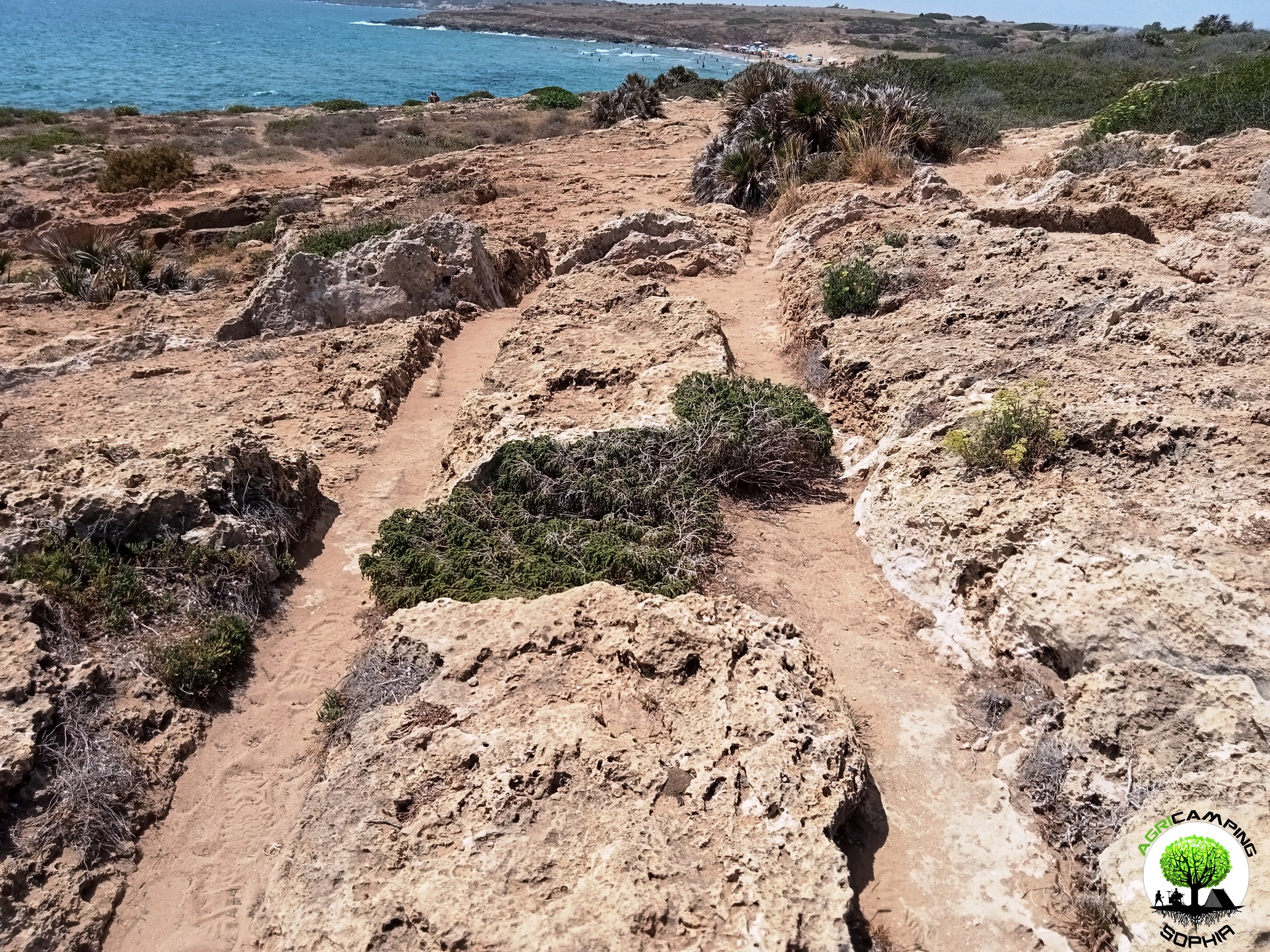 CART RUTS AND A FEW TOO MANY PROJECTIONS
CART RUTS AND A FEW TOO MANY PROJECTIONS
Read also THE POLISHING OF THE CART RUTS
I will skip any preamble, referring to to what has already been written regarding the presence of cart ruts in south-eastern Sicily.Considering the possibility that the cart ruts were gradually dug by the passage of carts pulled by pack animals, for example pairs of oxen, observing certain sections of the cart ruts present in the Granatari Vecchi district, in Rosolini, and in the Pizzuta district, close to the Vendicari Reserve, two questions arise:
1. Why force the animals to pass over rough surfaces and protrusions high, compared to the base of the furrows, even 60-70 centimeters?
2. Why, in the presence of such obstacles, not opt for a detour?
For Mottershead, Pearson and Schaefer such protrusions appeared later, since at the time of the passage of the wagons, a layer of earth covered the rocky bank, thus not making the obstacle...
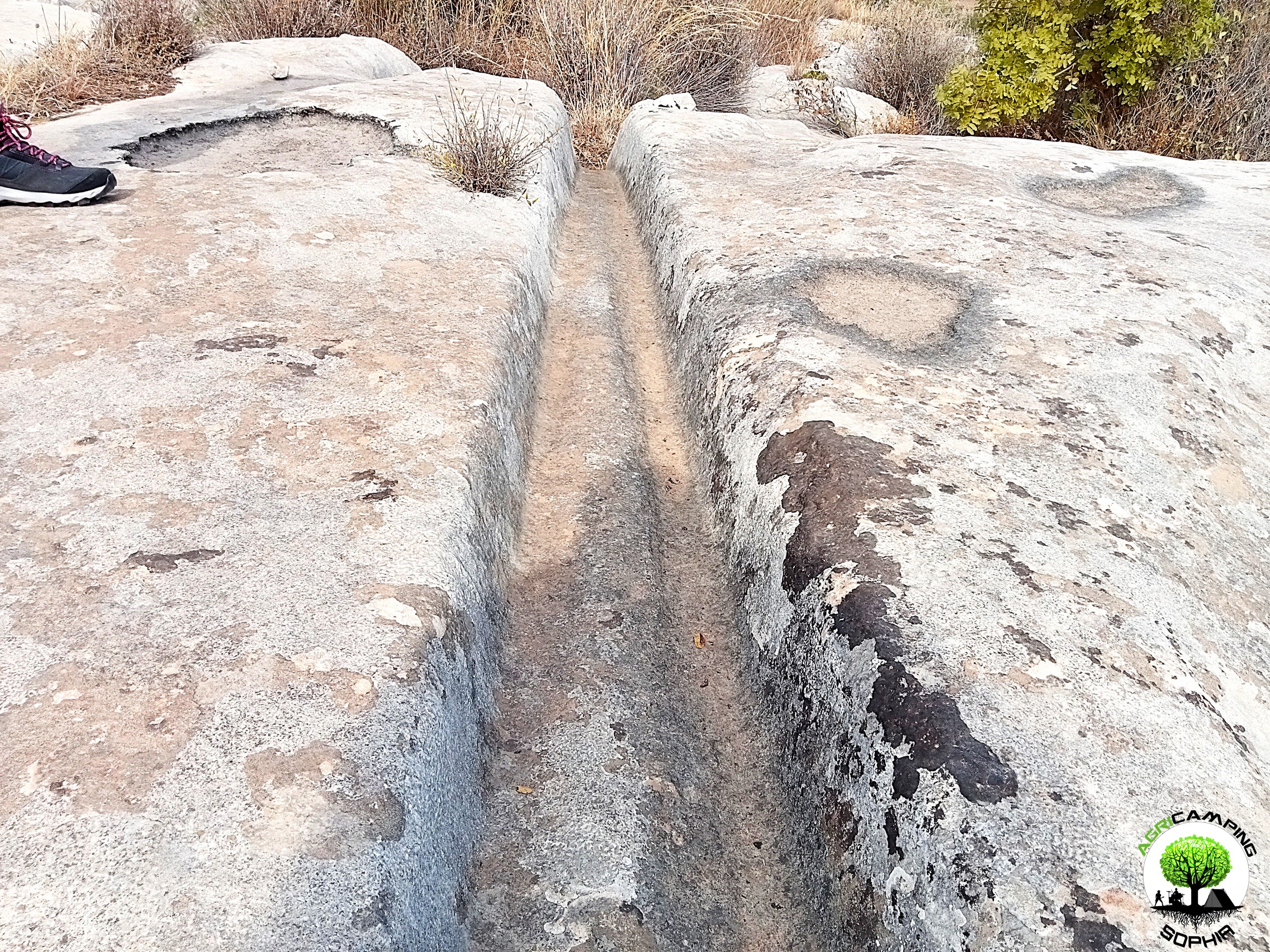 THE POLISHING OF THE CART RUTS
THE POLISHING OF THE CART RUTS
Read also THE PROBLEMATIC EDGES OF THE CART RUTS
I will skip any preamble, referring to to what has already been written regarding the presence of cart ruts in south-eastern Sicily.
To proceed with this comparison I have chosen a probable capital and the corner of a recess present in a block of the northern walls of Eloro that would seem to resemble a pinax, that is, a niche that would have housed a fresco of the heroa, but which a more careful observation refers to a system functional to the grip of the block through a pincer winch. Both elements, like the curt ruts, have remained at the mercy of the elements for millennia, and are therefore subject to comparable wear and tear due to the passage of time. The finishing of the capital should be of a high standard, since it is an architectural element that also has an aesthetic function. The recess, on the other hand, should have...
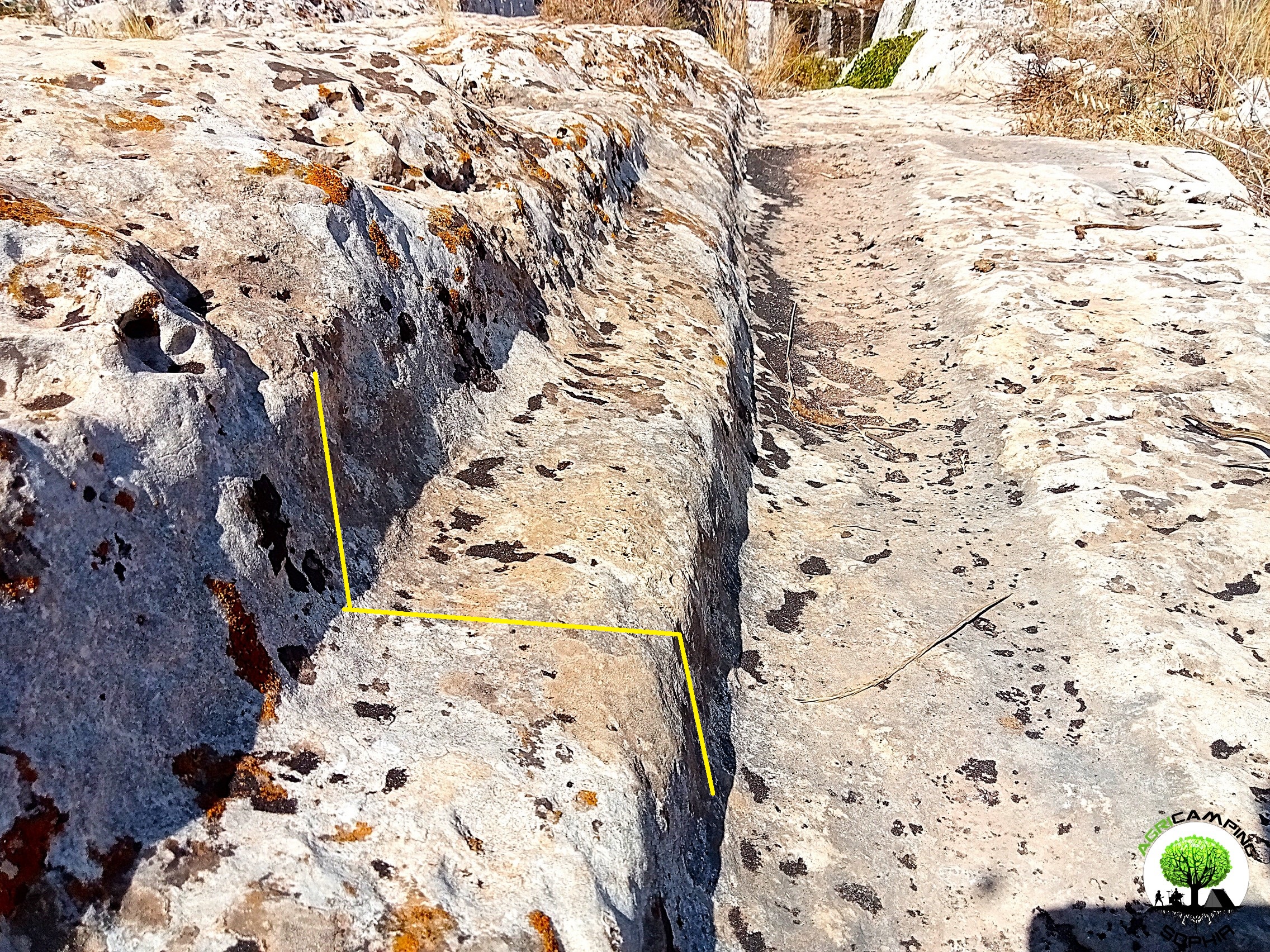 THE PROBLEMATIC EDGES OF THE CART RUTS
THE PROBLEMATIC EDGES OF THE CART RUTS
I will skip any preamble, referring to to what has already been written regarding the presence of cart ruts in south-eastern Sicily.As can be seen in other sites around the world, in some cart ruts I visited, in particular in the Cugni district in Pachino, in the Granati Vecchi district in Rosolini and in the Targia district in Syracuse, a clear border can be seen, a sort of frame, next to the grooves, more marked externally, barely noticeable internally.
The borders I measured have a width of 14-20 centimeters and a height of 8-10 centimeters.
Not all cart ruts have such frames present or particularly evident, regardless of the degree of wear or degradation. They are found above all in cart ruts with less deep grooves.
As already described in detail, given the presence of furrows with a depth of even 65-70 centimeters, the wheels of a possible vehicle would have had to have a...
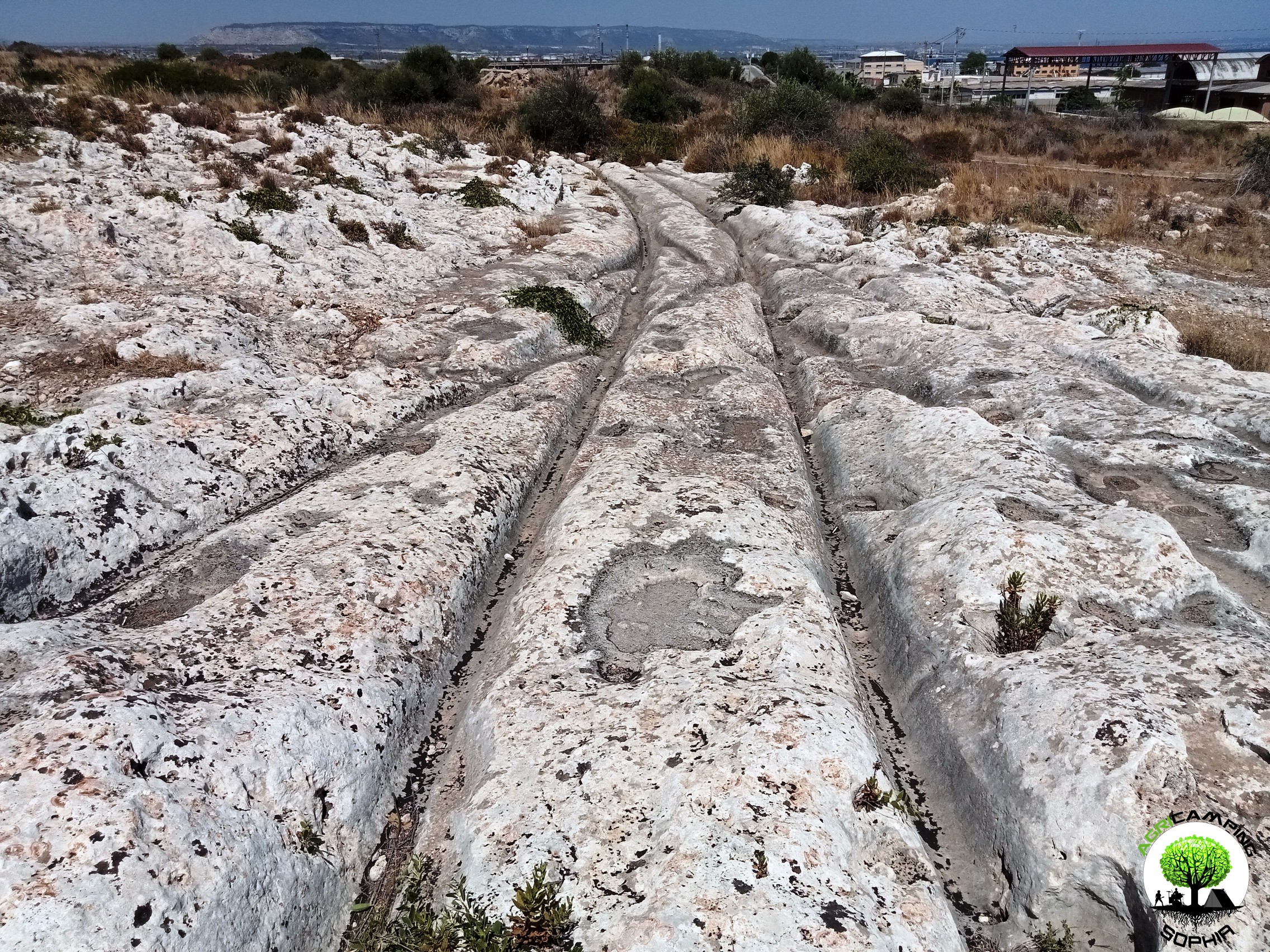 THE PROBLEM OF CART RUTS IN SOUTH-EASTERN SICILY (PART FOUR)
THE PROBLEM OF CART RUTS IN SOUTH-EASTERN SICILY (PART FOUR)
Click here to return to third part
Clapham Junction
As in the Maltese site Misrah Ghar Il-Kbir, also in the Targia and Granatari Vecchi districts the cart ruts intersect and cross each other in a similar way to the track switches in a railway station. The nickname Clapham Junction that was given by David H. Trump to the Maltese site, derives precisely from the similarity with the famous English railway station. For Sagona these are agricultural furrows and water channels, for Mottershead, Pearson and Schaefer these are abandoned paths due to obstacles and wear. Obviously we do not know what the morphology of the Syracuse and Rosolini territory was at times when the cart ruts were traced, but considering the current context, there certainly would have been no agricultural reason to build them, given the presence of fertile land, springs and fresh water courses just a few kilometers...






 DO YOU WANT TO ORGANIZE AN ERASMUS AT AGRICAMPING SOPHIA?
DO YOU WANT TO ORGANIZE AN ERASMUS AT AGRICAMPING SOPHIA? CART RUTS MODELED ON SOFT ROCK?
CART RUTS MODELED ON SOFT ROCK? RACK OR HOUSING FOR CLOGS?
RACK OR HOUSING FOR CLOGS? CART RUTS CUT FROM QUARRIES
CART RUTS CUT FROM QUARRIES CART RUTS AND A FEW TOO MANY PROJECTIONS
CART RUTS AND A FEW TOO MANY PROJECTIONS THE POLISHING OF THE CART RUTS
THE POLISHING OF THE CART RUTS THE PROBLEMATIC EDGES OF THE CART RUTS
THE PROBLEMATIC EDGES OF THE CART RUTS THE PROBLEM OF CART RUTS IN SOUTH-EASTERN SICILY (PART FOUR)
THE PROBLEM OF CART RUTS IN SOUTH-EASTERN SICILY (PART FOUR)